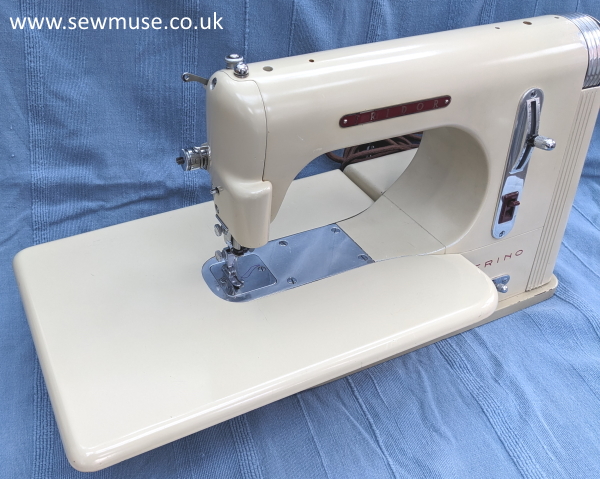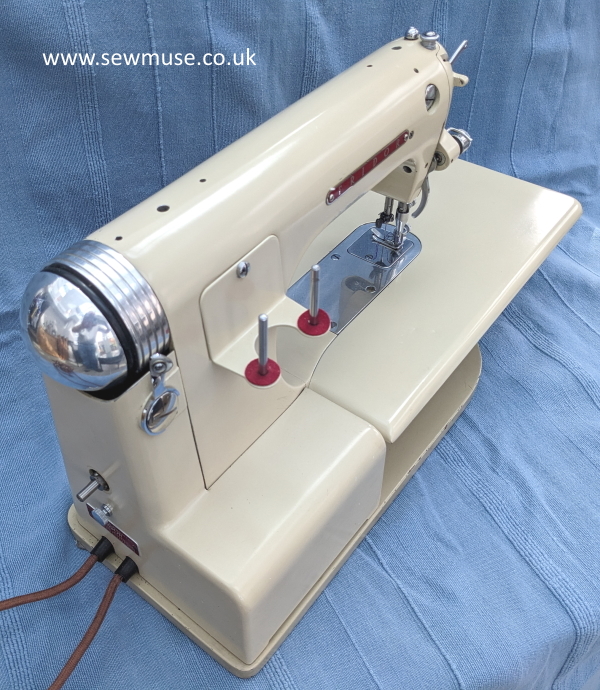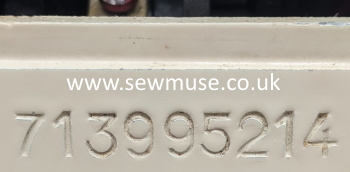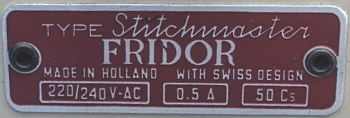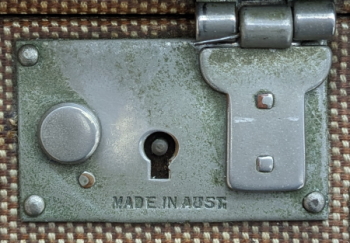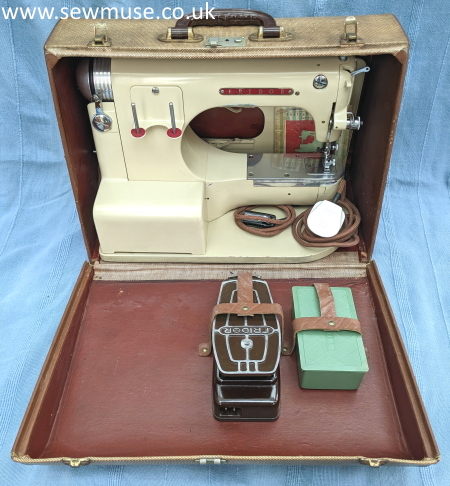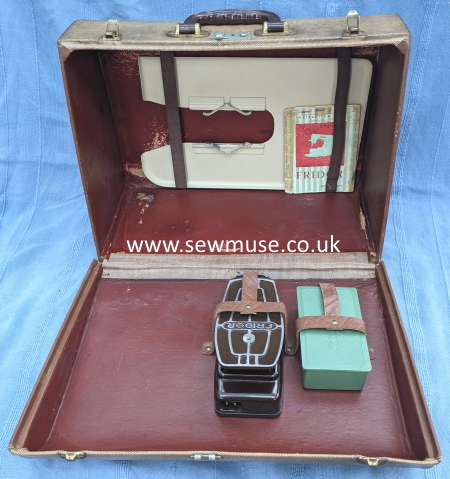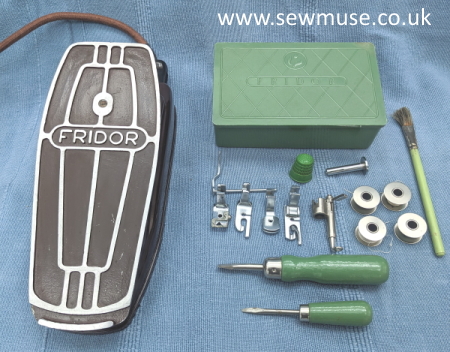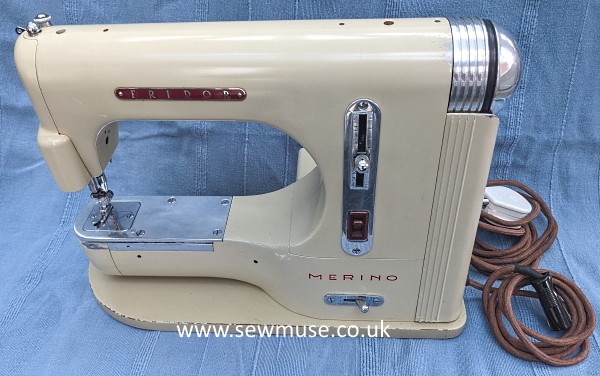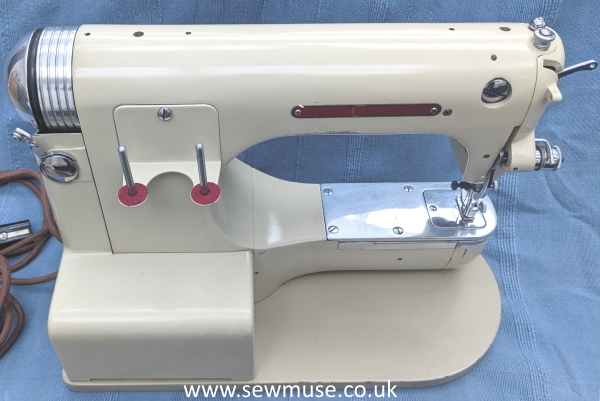Fridor Factories Ltd, The Hague, Holland was established to manufacture and sell the Fridor Stitchmaster sewing machine development of which had started in 1947. The new machine built aroound a Swiss motor was displayed in Amsterdam in 1948 with series production commencing in 1949. The company produced about 20,000 machines a year. Around 1956 the Fridor Automatic Zig-Zag machine was added to the range. The company also produced radios and vacuum cleaners.
In 1955 it was announced that the Fridor company would supply sewing machines to Australia, the contract was worth nearly one million pounds over four years and in 1957 a new factory was completed by Fridor (Australia) Pty Ltd in partnership with Pinnock Manufacturing Co. Pty Ltd to manufacture Fridor sewing machines at Elizabeth, South Australia. This new venture was the first time complete sewing machines had been manufactured in Australia.
In May 1957 Fridor Factories Ltd went into liquidation all it's assets seem to have been purchased by Pinnock Manufacturing Co. Pty Ltd including the factory in Australia as well as a Fridor factory in Belgium. The premises in the Hague was sold off to the Red Cross.
Pinnock continued to produce Fridor Sewing machines both in Australia and Belgium certainly into the 1960's although later it apparently used the Fridor name on various imported machines from other manufacturers.
All Fridor Stitchmaster machines I have seen so far have extremely high serial numbers which cannot represent the actual number of machines made. I have started a database for Fridor Stitchmaster machines and would welcome details of any of these machines. Contact Us
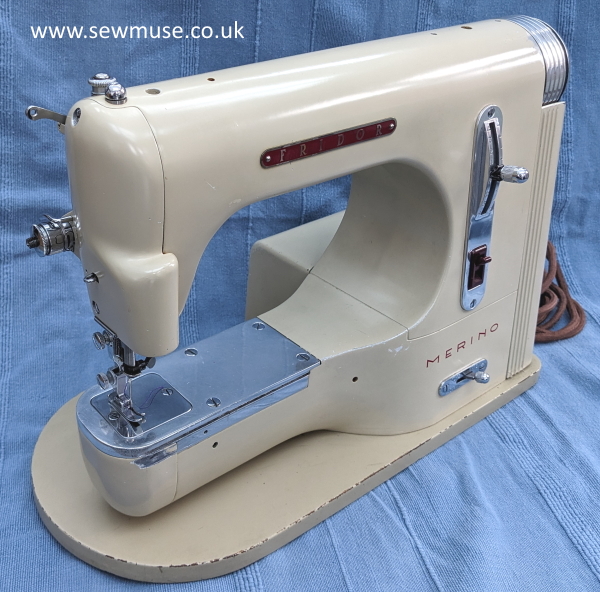
Fridor Stitchmaster Merino Serial No.713995214.
This machine was made in Holland around 1956 and exported to Australia.
It's a standard Stitchmaster but with the name Merino which seems to have been applied to many Fridor machines destined for Australia.
Merino is a type of sheep that Australia was renown for and this may indicate it was one of the machines sold to Australia under the 1955 agreement.
The Fridor Stitchmaster is a free arm machine which could darn, embroider, patch, applique and button hole without any extra attachments.
The table which just slots on and off provides ample extra work room. When not in use it is stored neatly in the case
The serial number on the Fridor Stitchmaster is on the back of the main casing of the machine directly beneath the spool pin holders.
Given Fridor machines produced in Holland were only made for eight years its highly improbable that the serial number represents the number of machines made.
The identification plate is on the end of the machine just above the entry point for the power cables.
In this case it shows the machine was Made in Holland with Swiss Design however these plates vary, some have Made in Holland with Swiss Licence, Fabrication Brevet Suisse, or Made in Belgium with Swiss Design.
This machine has a "hard" case and the lock is stamped with Made in Aust. which may indicate the whole case was produced in Australia.
Most Stitchmasters sold in Europe and America seem to have had soft "suitcase" type cases.
The machine and all its accessories neatly fit in the case. The foot controller and accessory box are held in place with "leather" straps, the extension table sits behind the machine held by two elasticated straps. The underneath of the extension table faces outwards so it just clears the machine's stitch length lever.
The foot pedal is neat and there are various feet some of which are Simaco. The screwdrivers appear original although I'm not sure about the brush or thimble!
The machine came with an original poor condition manual, I purchased a replacement which I've found is very slightly different!
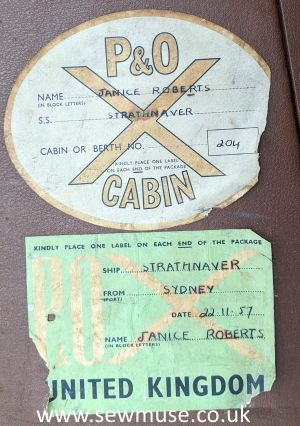
The end panel has two labels which show that this machine and its owner travelled from Sydney to the United Kingdom on 22nd November 1957 on the P & O ship S. S. Strathnaver.
Berth 204 was a single berth cabin on E deck.
The Strathnaver was the first of 5 Strath Class ships and was, at the time, the largest P & O liner with stylish Art Deco interiors and turbo-electric motors powering twin screws. It also set a trend for future P & O ships with a white hull and buff funnel(s).
Launched on 5th Feb 1931 its maiden voyage was on 2nd Oct 1931 from Tilbury (its home port). As originally designed it had three funnels the outer two being dummies and could accomodate 498 First Class and 668 Tourist Class passengers along with a crew of 476.
It served as a troop ship between 1939 and 1948 afterwhich it was refitted to carry 1252 passengers and at the same time the dummy stacks were removed.
The Strathnaver was scrapped in 1962.
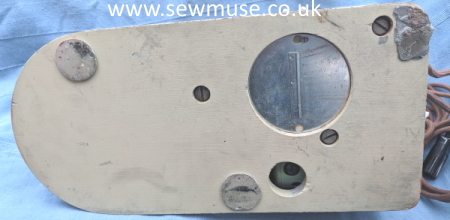
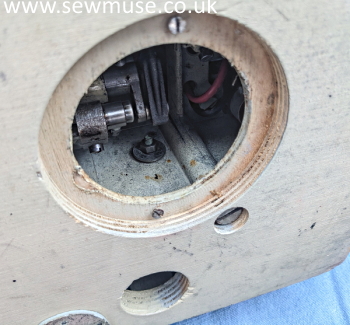
The base of the machine is made of thick plywood and has two ports - the main one for maintenance of the machine which is covered by a metal plate. The second appears to be either for access to the motor or more likely for ventilation of the motor given the motor is fully enclosed other than a narrow air gap between the housing and the base.
Finally two side views of the Fridor Stitchmaster.
Early Stitchmasters were soft green in colour but different colours were introduced including pale blue, steel blue and of course cream. As mentioned this machine has the name Merino but some are plain and others have a red headed tulip.
The red switch under the stitch length adjuster is the light switch the actual bulb is housed in the bulge on the needle head.
The rear view shows the mounting for the twin spool pins which is removable and the motor housing. Unusually the machine uses two rubber belts to provide the moton to the needle bar.


